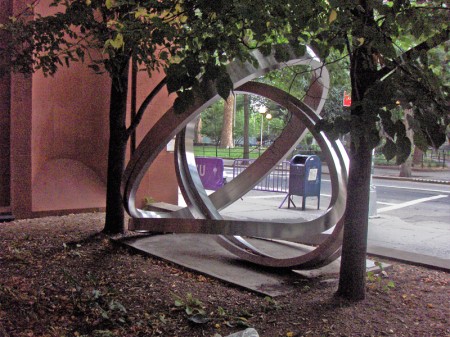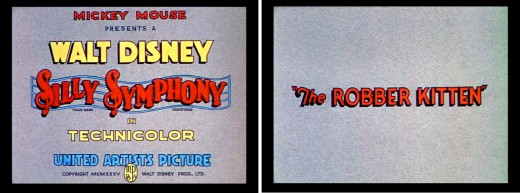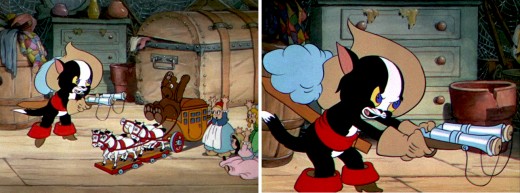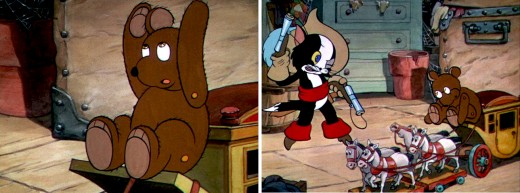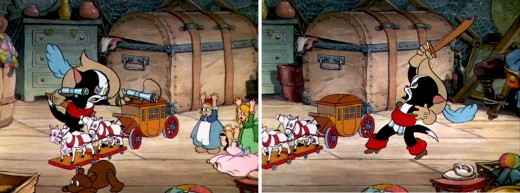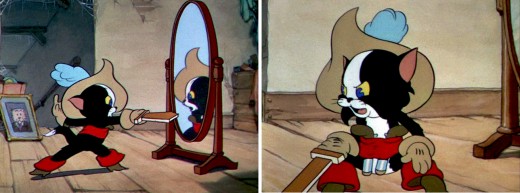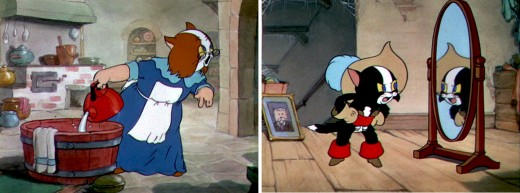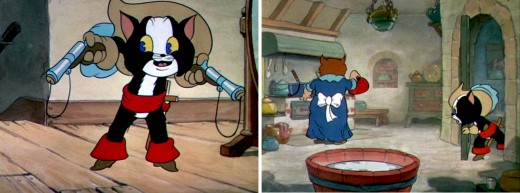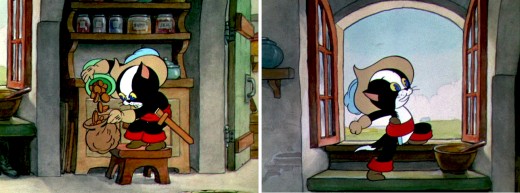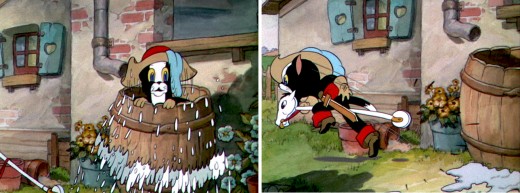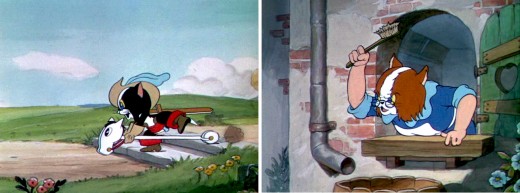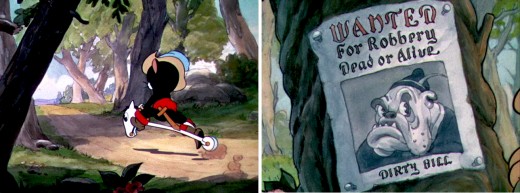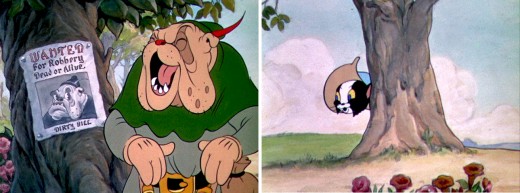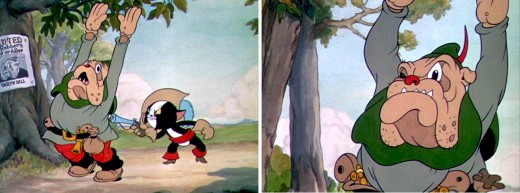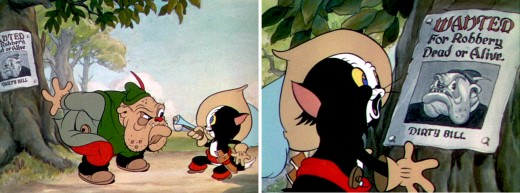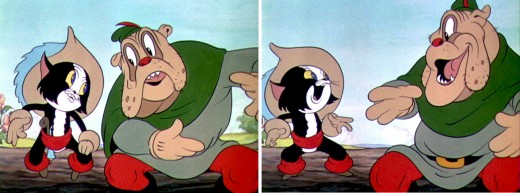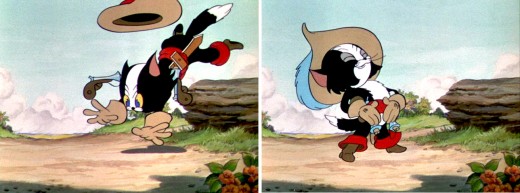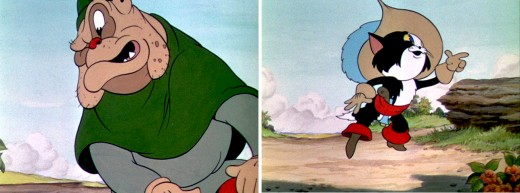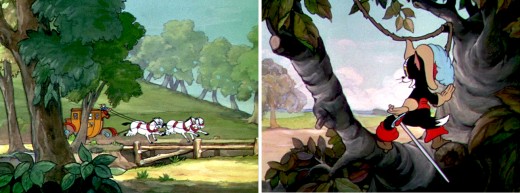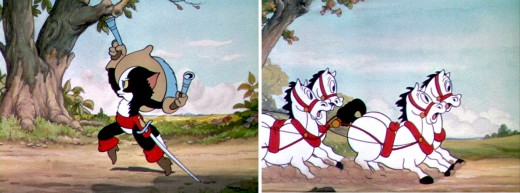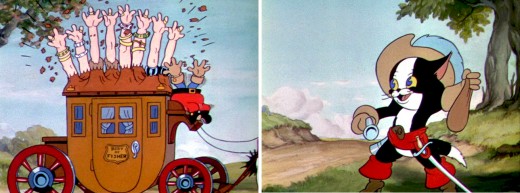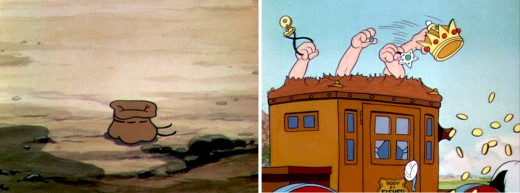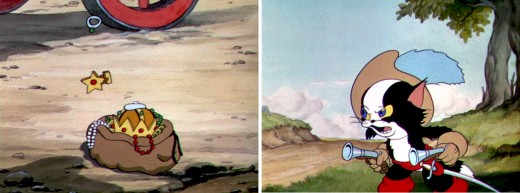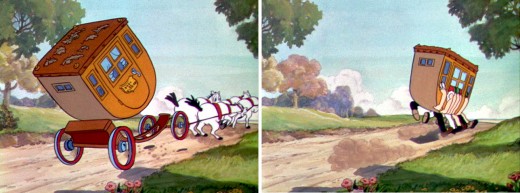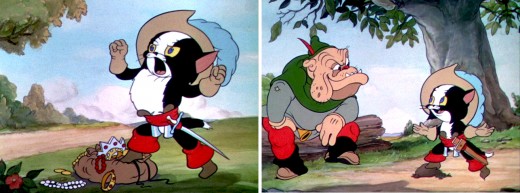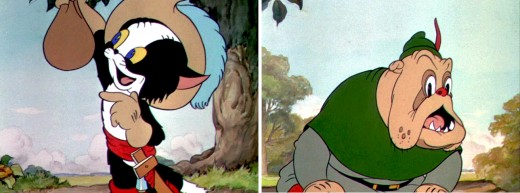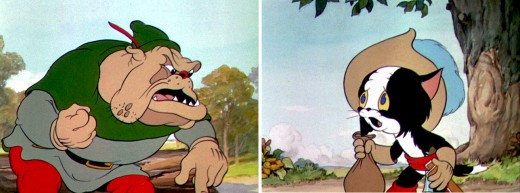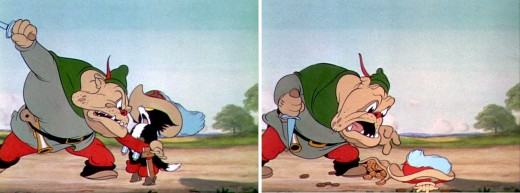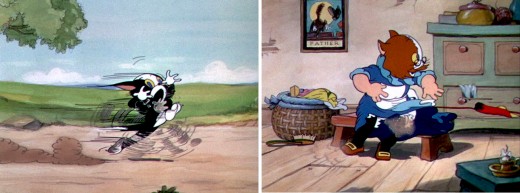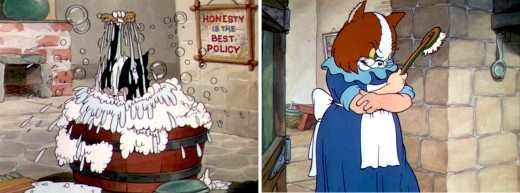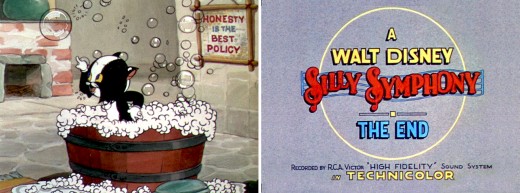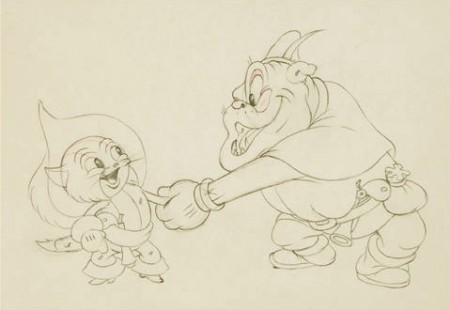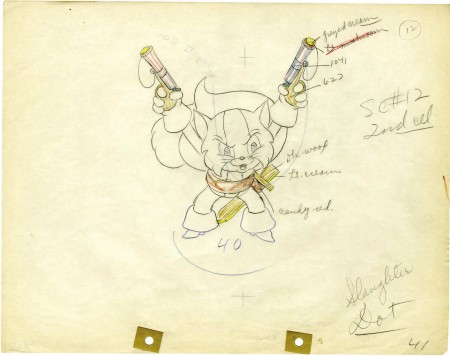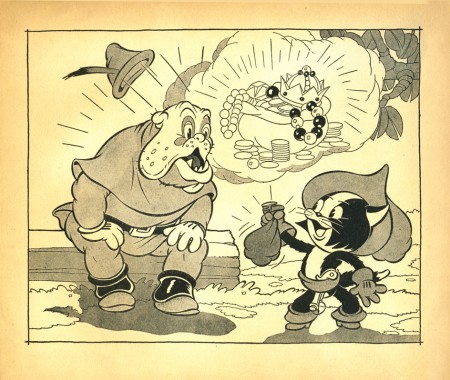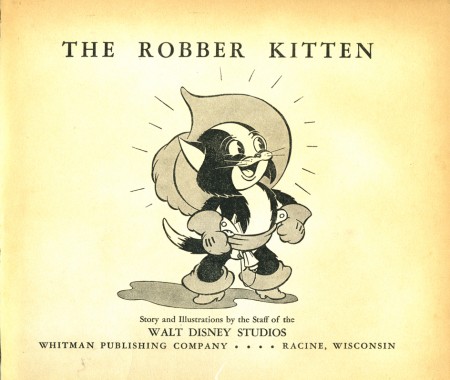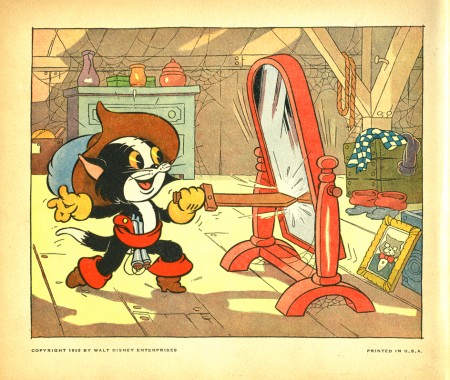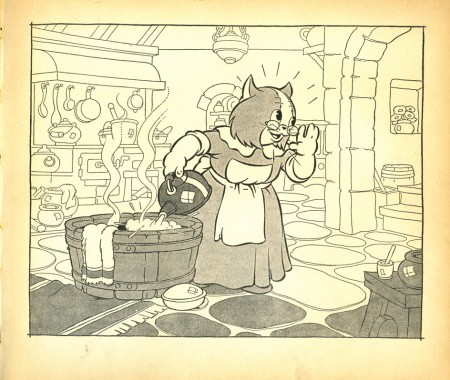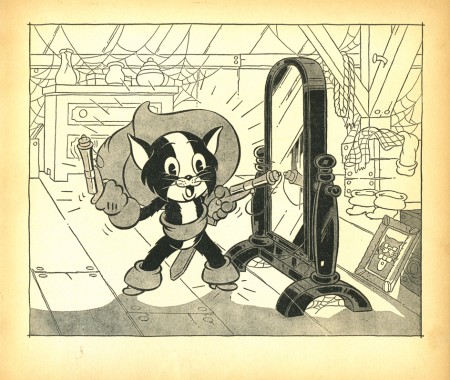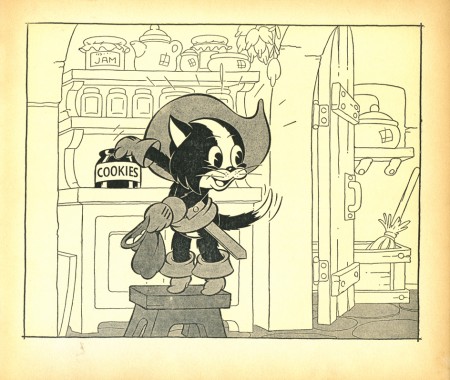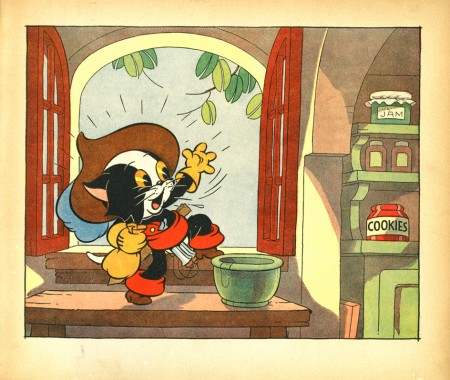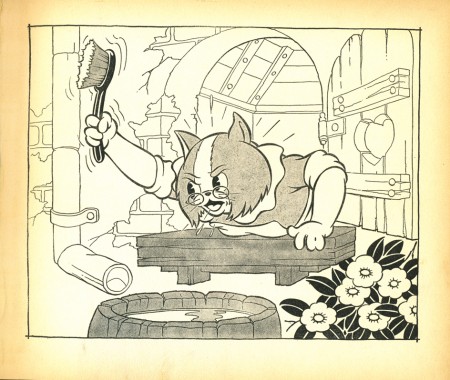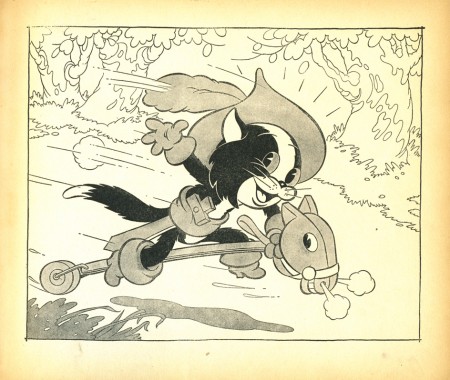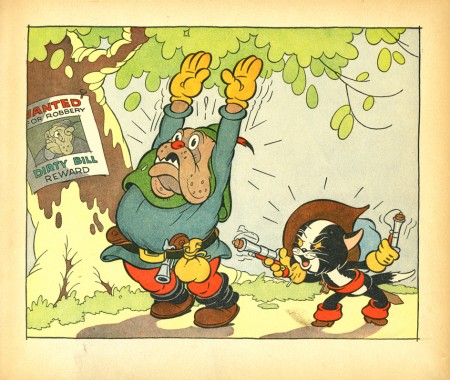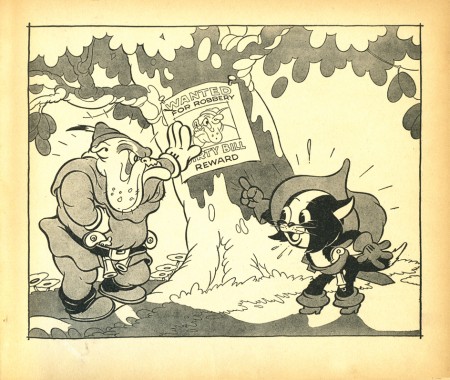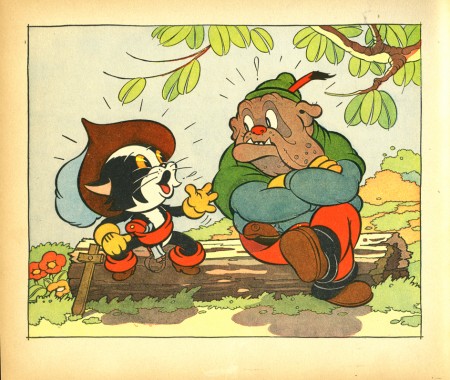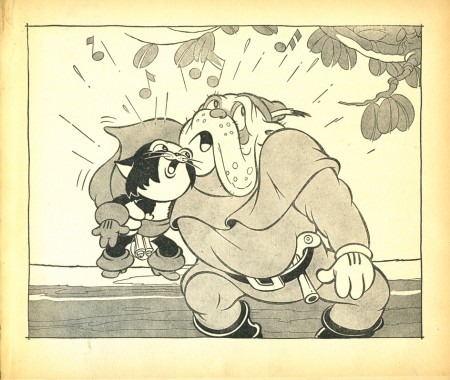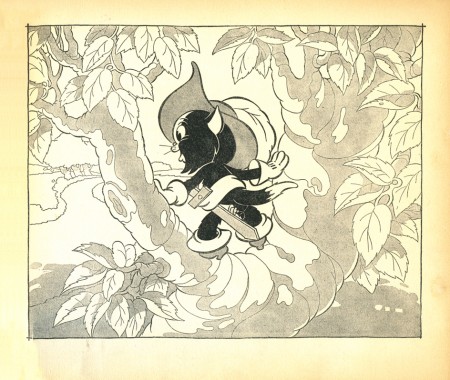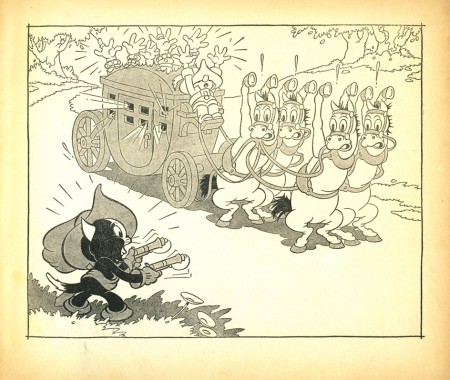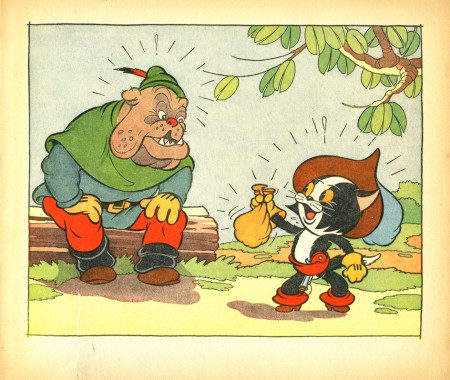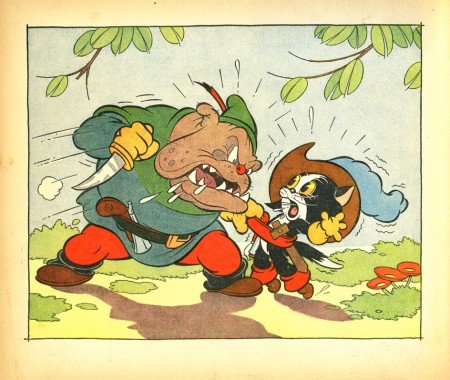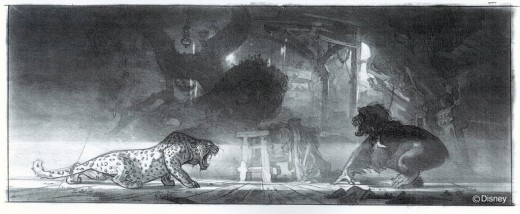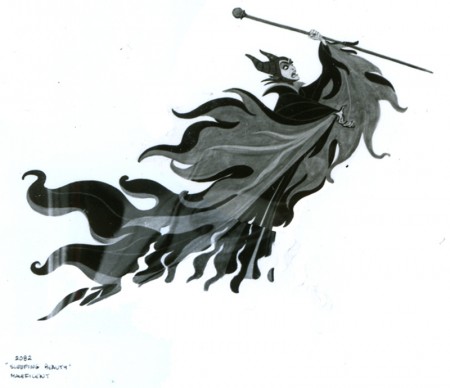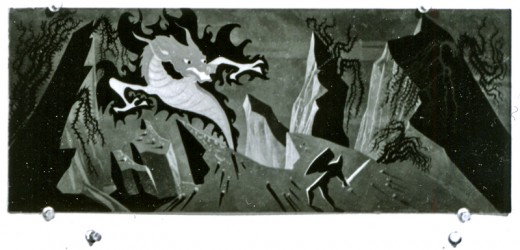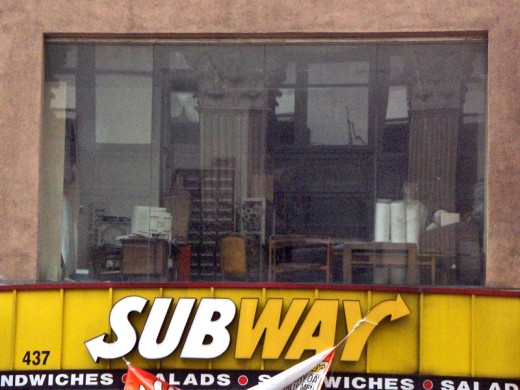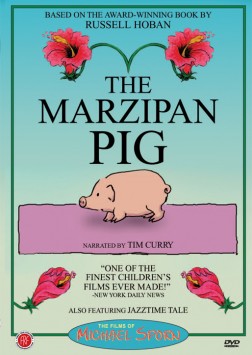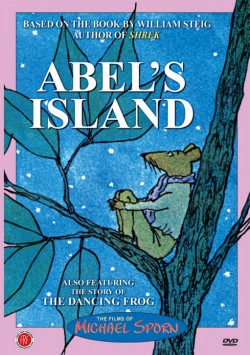Monthly ArchiveAugust 2008
Commentary &Photos 10 Aug 2008 08:07 am
PhotoSunday: Sidewalk Sculpture
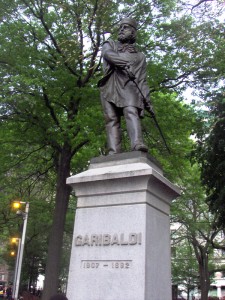 - Public stauary in New York City is much like trees. Within the many parks, there are lots of trees as well as statues; outside of the parks, the trees are less obvious as are the statues. However, there are still many.
- Public stauary in New York City is much like trees. Within the many parks, there are lots of trees as well as statues; outside of the parks, the trees are less obvious as are the statues. However, there are still many.
Outside the park the sculpture is a bit more modern and often abstract. Let’s move from one to the other.
This statue of Garibaldi is typical of the many statues from the early 20th Century that depict somewhat realistic images of heroic and public types. There’s usually an attempt to make the people a bit larger than life. Some of these are more daring and/or dynamic than others.
Garibaldi sits in NYU’s Washington Square Park, downtown, and has an important place within that park.
_____(Click any image to enlarge.)
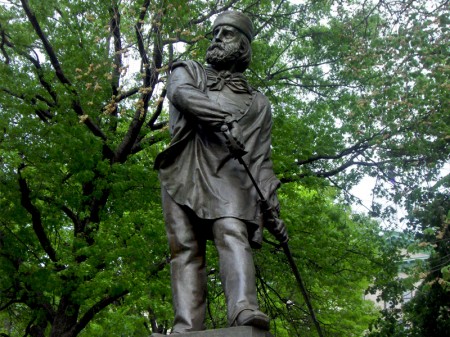
Giovanni Turini’s statue was made for an Italian American organization
and donated to the park in 1888. It has developed a handsome patina which
allows it to nestle in among the beautiful summer greens around it.
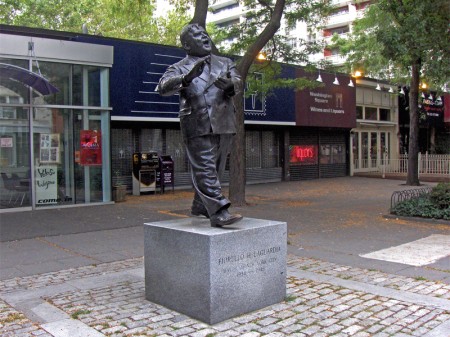
Just outside of Washingon Square Park there’s a mall of a street
filled with small shops and restaurants, LaGuardia Place. Among and
in front of theses shopos is a statue of Fiorella LaGuardia, the mayor of
New York from 1934 to 1945. The statue is by sculptor Neil Estern.
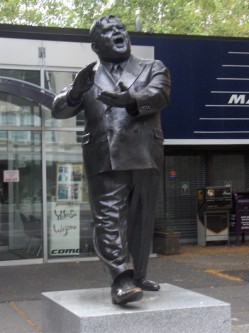
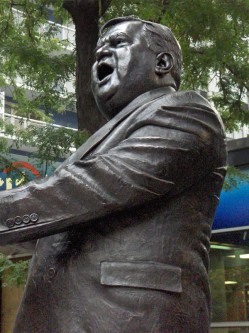
All I really know about LaGuardia was that he read the Hearst comic strips,
“Puck, the comic weekly,” on Sundays over the radio. An odd little fact that
Chuck McCann told us in his weekly Sunday kiddee show in NY during the 60′s.
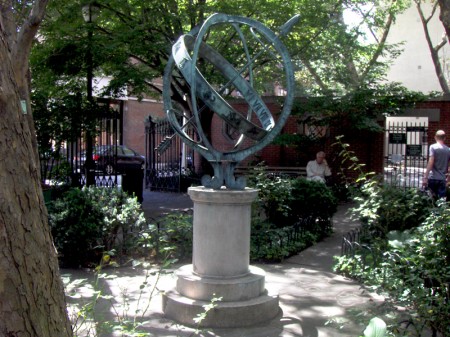
In a very small park off Sixth Ave. and Bleecker St., called
Winston Churchill Square, there’s there’s this armillary on a pedestal
centered in among park benches and greenery.
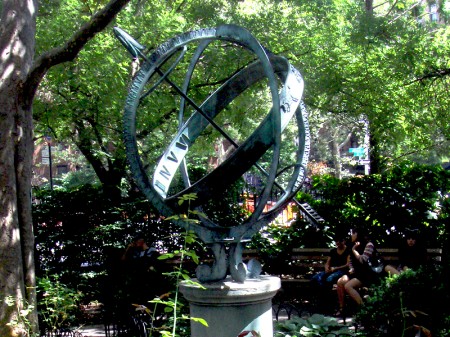
The park was designed by George Vellonakis.
He may have designed the sculpture.
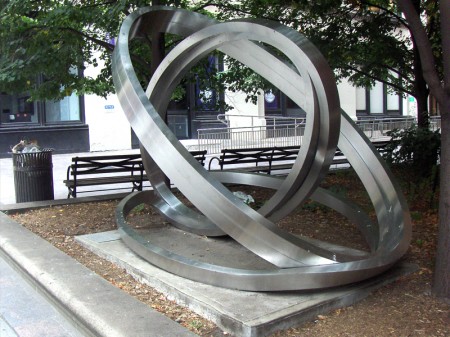
What looks like a more abstract version of an armillary sphere sits among
the buildings of NYU. Here are two views from both front and back.
These sculptures are all within six city blocks of my studio.
There are thousands more in New York, and I’ll post more soon.
Daily post 09 Aug 2008 08:12 am
Dil & Dali
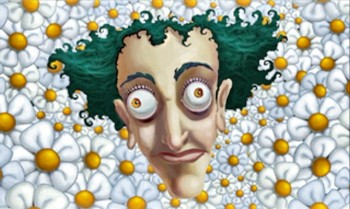 – John DIlworth wrote from Spain that his film, Life in Transition, will be playing this month at the Museum of Modern Art. The film will be on the same bill as Federico Fellini’s The White Shiek.
– John DIlworth wrote from Spain that his film, Life in Transition, will be playing this month at the Museum of Modern Art. The film will be on the same bill as Federico Fellini’s The White Shiek.
The description, according to MOMA’s catalogue states that, “Dilworth explores metamorphosis, a main concept in Surrealism, in Life in Transition, unquestionably an homage to DalÃ.”
The first screening will be this coming Wednesday, August 13, at 7:30 p.m.
It’ll repeat on Saturday, August 23, at 5:30 p.m.
- It’s nice to have been ever-so-slightly ahead of the curve.
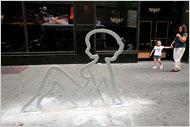 Recently, I had a post about bicycle stands around the city and the various shapes they take. What I didn’t realize was that David Byrne has been obsessed with all things bicycle, and he has designed a number of bike racks around the midtown area. There’s an article in today’s NYTimes about his recent artwork/sculptures for the bicycle. It’s worth a look.
Recently, I had a post about bicycle stands around the city and the various shapes they take. What I didn’t realize was that David Byrne has been obsessed with all things bicycle, and he has designed a number of bike racks around the midtown area. There’s an article in today’s NYTimes about his recent artwork/sculptures for the bicycle. It’s worth a look.
Now, back to John Dilworth:
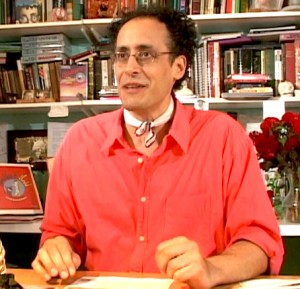 John also sent the following interview that was conducted by Lindsey Hawkins, they’re all questions from fans about Courage the Cowardly Dog:
John also sent the following interview that was conducted by Lindsey Hawkins, they’re all questions from fans about Courage the Cowardly Dog:
- 1. You have indeed met Simon Prebble, how did he like his role?
Simon enjoyed his role very much. He had a natural rapport with the personality of the Computer. However, Simon is an English gentleman who liked to laugh, where the Computer is a clever, but remote cynic, not concerned with human pathos. I had wanted a symbolic object to represent contemporary obedience to technology as “master” for Courage to confide in. The “home” computer was the logical “paternal” replacement.
I’m a bit of a fan of his other work in other things so I’d like to know.
2. Is there any hope of continuing Courage?
Well, humans have a tremendous capacity to “hope”. I have written so often on this. There is no corporate economic rational to make any new episodes. I’ve read that there have been petitions signed by many many fans that never even got to Cartoon Network. Maybe a campaign of a substantial nature of this kind, that actually got to an exec, would be a provocation. However, the lack of courage by the merchandisers still remains. “Pink” or “fuchsia” dogs will not sell in a boy dominated market place. This is rather complex, but the undercurrent of conservatism in America is strong and easy to intolerance.
3. What was your inspiration when you created the various villains?
Well, the villains were archetypes of human qualities or beliefs. Greed was a big character quality. Many of the villains were needy or hungry for something more; power, possession or privilege. Yet, I wanted to show a
“human” frailty in these villains, that they were vulnerable. Courage often was able to soften the villainous acts of these characters by being a “therapist”. For me, contemporary society is unable or unwilling to listen anymore. Maybe this is a product of conditioning over a long period of technological change that doesn’t promote much more than insecurity. The further humans retreat into the virtual, the more it appears the qualities that make humans “human” are endangered, qualities like tolerance, attention, inquiry…
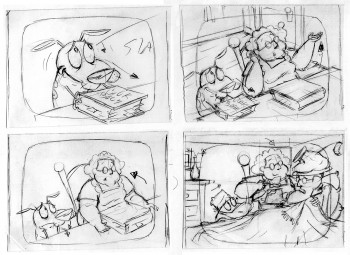 4. What was the original intent of the show when you created it?
4. What was the original intent of the show when you created it?
Science fiction is a genre that appeals to me so I may disguise my “rescue fantasy” complex. I wanted to “help” people, “save” someone, do something romantic and noble as “sacrifice” my safety for the safety of others. Courage was capable of doing this in the unreality of the animation landscape. Animation are dreams visualized. Visualized dreams are human desires calling out for an audience. Let’s not omit the common desire to make audiences laugh. In many ways, producing Courage enabled me to explore my sub-conscious and reveal some of my demons like abandonment of devotion, loss of honor, lack of self-expression. I was able to find mediums to best portray emotional landscapes like clay, CGI or cutouts. Any long term commitment develops as nature develops, things grow where non did before and as an artist/custodian I decide what to nurture and what to reverse. Then, like in nature, some things develop on it’s own while others don’t make it at all.
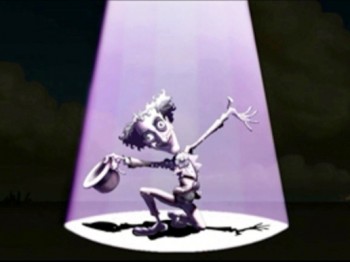 5. Where did you get that guitar sound from the beginning of the ‘Heads Of Beef’ episode?
5. Where did you get that guitar sound from the beginning of the ‘Heads Of Beef’ episode?
Jody Gray and Andy Ezrin are exception musical talents who enjoyed to work intuitively and spontaneously. Although I cannot recall any specific guitar experience, often we would sit around experimenting with what sounds come out of objects and instruments. Other times I would bring in ideas I heard outside the studio that would inform a new sound. I recall one inspirational moment was on an episode when Nowhere was underwater from the construction of a dam. Jody and Andy found an abandoned grand piano and opened it up. They began plucking, hitting and scratching the guts of the thing and recorded it. These sounds were used as the aquatic ambiance for the show.
6. Where did you get your inspiration for Courage, Eustace, and Muriel?
Three is a cultural number representing both the secular and the divine, the single child of working class families and a geometry, the pyramid. I have always been intuitively attracted to this number. Curiously, I was reminded of the my mythological trilogy of personae in a recent text. My films have exhibited this contradiction to “three’s a crowd” from the beginning of my life as an artist. When Lilly Laney Moved In, Smart Talk with Raisin, the Noodles & Nedd films and Angry Cabaret featured “three’s”. But it is in Raisin that the closest ancestors to Courage can be found. The dog star of the short was named Hamilton, and resembled Courage physically and even emotionally. Raisin’s brother, Malcolm is the Farmer as a boy. I recently gave a talk at a museum in Barcelona on how animation liberates the human spirit. I analyzed the mythological motifs of several of my films as a demonstration of auto-discovery through animation. It is apparent to me that the archetypes of the emotionally sensitive deliverer, the remote and rancorous brute and the nurturing “maternal” figure recur often in my work. Inspiration is also a matter of subconscious processes made conscious through will.
7. Why did you add words with sound like ‘smack, bang, bonk’ when a character screams or gets hit?
Originally I aspired to be a cartoonist and studied under Will Eisner at the School of Visual Arts in NYC, a very print dominated facility. Print cartoons are merely the beginning stage of the next, movement. Visual sound effects are a part of my vocabulary of animation as the grin or irrational reaction. I am also aware of how elements from different studies can compliment one another and add a bit of variety to a visual language.
8. Chris Gammon would like to know when you can get in touch with him again.
Chris is a good soul. Thank you for the message. I shall send him a Dilly greeting.
9. Where you got the ideas for The Queen Of The Black Puddle and Fred? Particularly if you got the inspiration for The Queen from mythology.
The Queen from the Black Puddle is a parody of the sci-fi film Creature from the Black Lagoon. Many of the Courage episodes were parodies of my favorite horror/sci-fi/supernatural films. Queen/Creature had an implicit 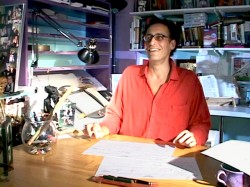 sexual message. The object of desire was to be “taken” at any cost. The irony in Courage is that who would imagine the Farmer as being the object of anyone/anything’s desire?
sexual message. The object of desire was to be “taken” at any cost. The irony in Courage is that who would imagine the Farmer as being the object of anyone/anything’s desire?
10. Why did you make it the middle of nowhere? If you use Google Earth you can find that there is indeed a real Nowhere, Kansas! Did you get the idea for it from that town?
I had no idea that a town with the same name existed. I wanted to portray a pseudo-village, a reverie and melancholia of places in America that proved no longer an economic imperative. To me, when a national chain or an international company decides to shut it’s doors the town that was dependent on that industry becomes enchanted, as if put under a sleeping spell, went from somewhere to nowhere.
Disney &Frame Grabs 08 Aug 2008 07:56 am
More of The Robber Kitten
- Having posted, yesterday, John Canemaker‘s copy of the book version of The Robber Kitten, a 1935 Disney Silly Symphony, I thought it’d be entertaining to go back to the film to take a look. Here are frame grabs from the film. It’s not the greatest of the Silly Symphonies, but it certainly came at the height of that series and is filled with enormous charm, technique and excellent animation. The staff was doing films like this better than ever before. It’s a solid little movie. (Too bad the copy on dvd is made from a print with a yellow haze running down the right side of the print.)
You can see this film on line here.
The book Walt Disney’s Silly Symphonies by Russell Merritt and J.B.Kaufman givews the credits:
Directed by David Hand
Script by Bill Cottrell
Music by Frank Churchill
Voices: Billy Bletcher (Dirty Bill) & Clarence Nash (horse whinny, Tarzan yell)
Animation:
Bob Wickersham (Ambrose, from opening through sneaking downstairs)
Marvin Woodward (Ambrose’s mother; Ambrose running back home)
Hardie Gramatky (Ambrose steals cookies and runs away from home; Ambrose flees from Dirty Bill)
Ham Luske (Ambrose and Dirty Bill before flashback)
Bill Roberts (Ambrose’s story: Ambrose, stagecoach, horses; Ambrose and Dirty Bill after flashback)
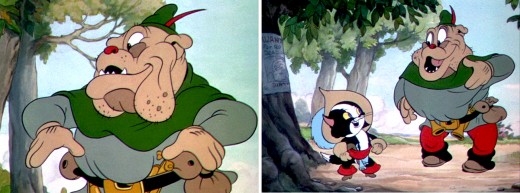
This sequence seems, to me, to be quite ground breaking.
Two characters have an extended conversation without interruption –
up to the point where Ambrose tells his fabricated story.
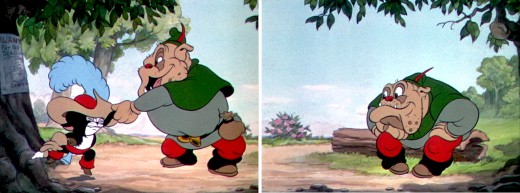
There’s plenty of business for the two of them, and their characters
are well defined through their dialogue, as well as the performances.
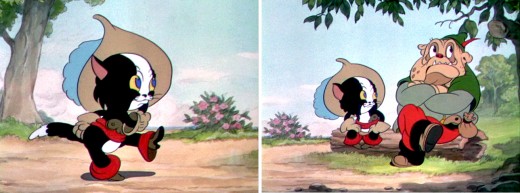
I suspect that Bill Cottrell had a lot to do with it.
He was more an writer than an artist, and his script was probably just that -
a script.
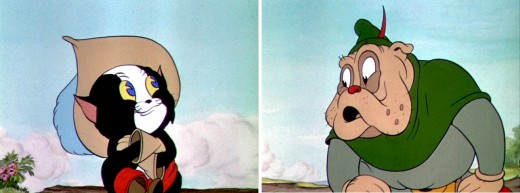
I have to presume he wrote this conversation between brigand and boy (kitten).
Here are a couple of production drawings I found for sale on line:
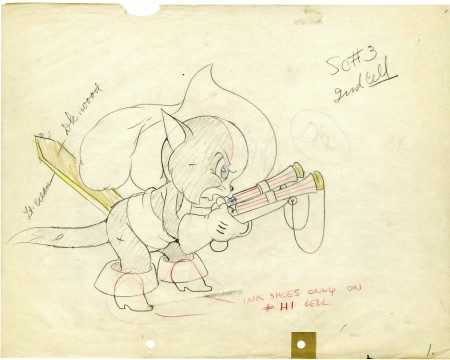
Books &Disney 07 Aug 2008 08:07 am
The Robber Kitten
- In John Canemaker‘s collection is a children’s book I lust after. It’s a 1935 publication of the Silly Symphony. The illustrations are out of this world. John’s loaned it to me to post the images. Every other page is filled with the type of the story, and the remaining pages are illustrations – most in B&W with tone. The book was published by Whitman Publishing.
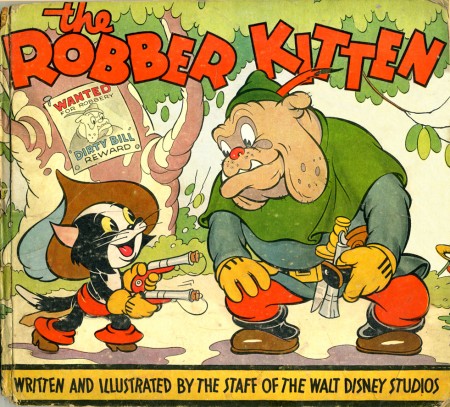
(Click any image to enlarge.)
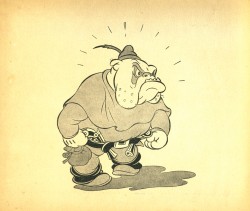
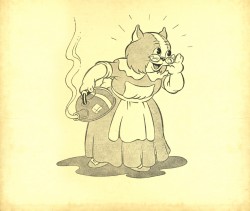
These two full pages drawings grace the covers’ interiors – front and back.
Commentary 05 Aug 2008 08:10 am
Tarzan
- On Sunday night, Telemundo ran Tarzan, and I watched about half of it. (I have the dvd but never think to pull it out.)
I remember taking my studio to the first screening of this in New York. A past editor of mine, Greg Perler, had edited it, and I was particularly interested in seeing his film and supporting the work. A number of things bothered me, and I suppose I didn’t give the movie as high a review as I would today. The event was colored by seeing Sting at the ticket booth as we were exiting. He turned and I nodded to him; he nodded back though he didn’t know me from adam. I remember well his beautiful camel hair coat. A brief memory.
Anyway, looking at the film again, many years later, I see that there’s some really fine animation in the beginning of the film, and I was almost in awe of the excellent assisting and cleanup on the film. The line work was quite fine. I very much like the animation of the cheetah/villain. It must have been pretty hard to do the character walking on the net as seen from a 3/4 overhead shot. Hard work to pull off.
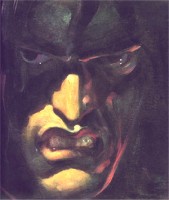 The film has an interesting style. It uses quite daring closeups throughout, almost as if it were trying to get into the heads of the cartoon characters. This is quite effective at times. I suppose it was during one of these early closeups that I got in tune with the amazing linework around the apes’ noses.
The film has an interesting style. It uses quite daring closeups throughout, almost as if it were trying to get into the heads of the cartoon characters. This is quite effective at times. I suppose it was during one of these early closeups that I got in tune with the amazing linework around the apes’ noses.
Walt Disney once said that if a closeup were on the screen too long it would become obvious to the audience that it were no longer looking at Donald Duck but at a drawing. I always questioned that thought and wondered how long was too long on a good closup. This film seemed to try to challenge that idea and really, for the most part, pulled it off.
The length of the closeups also played nicely against the rollerblading through trees which, to me, moved too quickly. (I also thought it challenged the laws of probability. If the character were real, the skin of his soles would have been ripped off his feet immediately. It was just Glen Keane’s attempt to inject a popular fad into the film. But then we also have an elephant using his trunk like a periscope. He looks to see above water with his nose; a 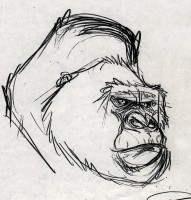 handy trick elephant’s can perform, I guess.)
handy trick elephant’s can perform, I guess.)
The computerized backgrounds really was a break through. I found it hard, at times, to tell the difference between the painted BGs and the computer rendered ones and thought that some of the computer rendering quite graceful.
The film in Spanish was better off without Rosie O’Donnell’s voice but suffered a great loss without Minnie Driver’s. Her voice work has to be one of the great female voiceover performances post Beauty and the Beast feature length film.
- While watching this film – even in Spanish – it was obvious to me how much better the performances of the characters were in comparison to anything I’ve seen recently. I know there are a lot of fans out there supposting the new technology, but I still don’t see how the animation part will get any better. The technology will improve, and the realistic representation of the characters will improve, but I’m not sure animators will be able to find 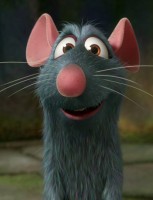 the soul of any of these characters and then be able to translate that through the medium to us.
the soul of any of these characters and then be able to translate that through the medium to us.
The closeups in Tarzan were so well done that I was forced to think of Mark Mayerson‘s writing about animated acting. I have often compared animated characters to the performance you would get from a live actor. The slight change of the eyes, the actual thought process that is revealed through the camera. The slightest motions. Perhaps they were onto something with Tarzan. Of course, this family friendly film meant it had to have superfast gliding and swinging and fighting. However, it’s in the slow scenes that the film gets any magic that it has, and the animators have well earned it.
___But does it breathe?
Don’t miss Hans Perk‘s series this week on the multiplane camera.
Daily post 04 Aug 2008 07:55 am
Sleeping Beauty – storyboard Seq 19 Pt 3
- This is the final photo/page of the Ken Anderson board for Sleeping Beauty. John Canemaker loaned me the series (which I’ve posted on the past few Mondays) that includes Sequences 18 & 19 of the film. They’re the climax of the film – Prince Phillip’s battle with the thorns and the dragon, ultimately killing off Maleficent.
This is the whole photo as is:
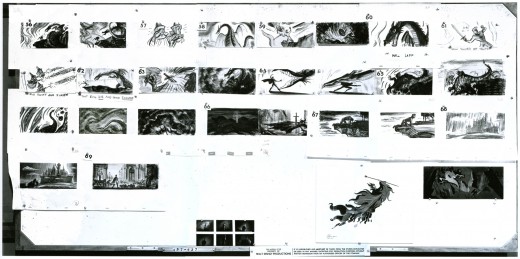
(Click any image to enlarge.
Here, I’ve broken the photo into rows cutting the rows in half. This way I can post them as large as possible for viewing.
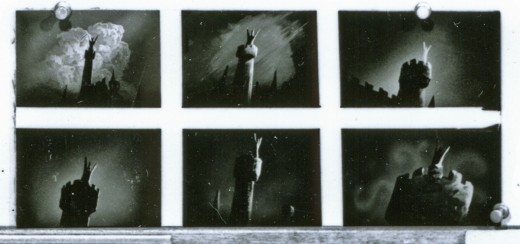
These last are tiny thumbnails at the base of the photo.
Photos 03 Aug 2008 08:04 am
PhotoSunday: Windows
- There was a short article in the New Yorker recently about someone in New York who had a shark tank in a window which was visible to pedestrians from the street. This had me wonder about windows and how much we could see within windows from the street. Generally, speaking.
The answer is not very much, and I actually wondered about that shark tank. I’d thought about this subject before this point. Standing at a bus stop on 30th Street and Park Avenue, one could look into a picture window I’d seen quite a few times. I was never quite sure whether it was an office or an apartment, and in all the years I’ve gazed into that window, I haven’t seen any people. Nor have I seen the interesting furniture moved about. The place looks like what one might think an old time editor’s office would look like. This makes me think it’s probably a living loft for someone.
For the most part there’s an enormous glare coming off windows and, fortunately for the sake of privacy, we can’t see very much of the interiors of these apartments. However there are all sorts of windows out there and they all look very different while, in another sense, they all look the same.
I suppose we can blame housing regulations for this. In the not too distant past, the City dictated that all landlords would be responsible for making windows energy efficient. There seems to be only one brand of window that fits this category (at least they all look alike – except for color) and almost all windows seem to have filled this bill.
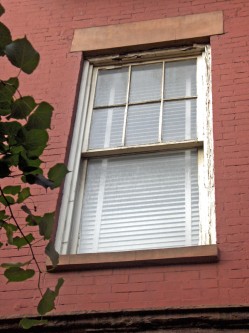
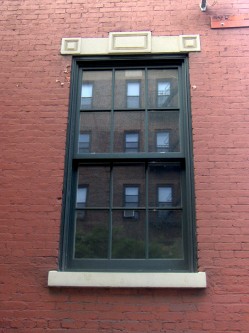
To the left an older wood style window that isn’t very energy efficient
and is in the extreme minority among windows.
The right shows a newer casing that has been given some small sense of design.
This isn’t generally what you see.
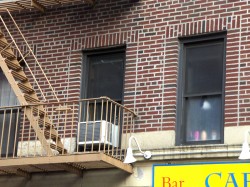

The standard is less attractive from outside. Whether they move up and down (L)
or slide left and right (R) they’re not very pleasing, aesthetically speaking.

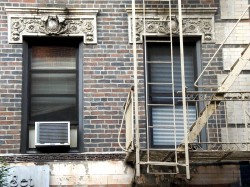
Many windows depend on the tenant to dress them up with plants and such (L),
however some older buildings have attractive lintels that
merge with these newer casings (R).
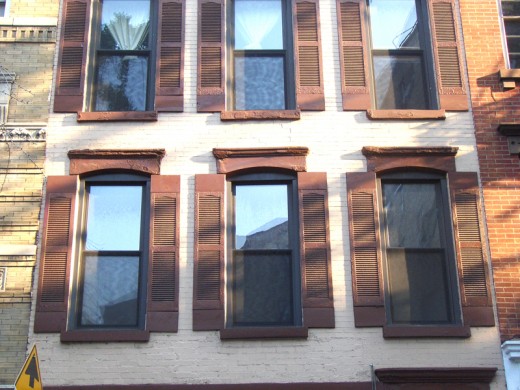
French shutters (that don’t seem to close – they’re just for dressing)
helps hide the standardized casings.
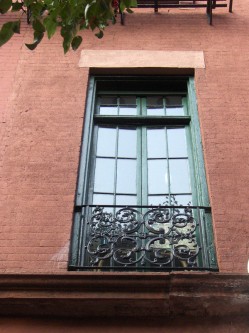

There are some attractive variations such as
the french style window that opens inward (L)
or the casing can open outward (R) – a bit less interestingly.
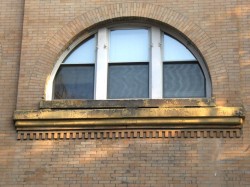
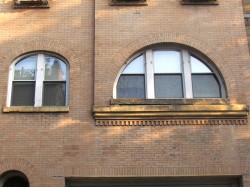
There’s also the shape of the window. I imagine these are much harder to
maintain or replace. I’m also not sure the casing is energy efficient.
But they sure are pretty.
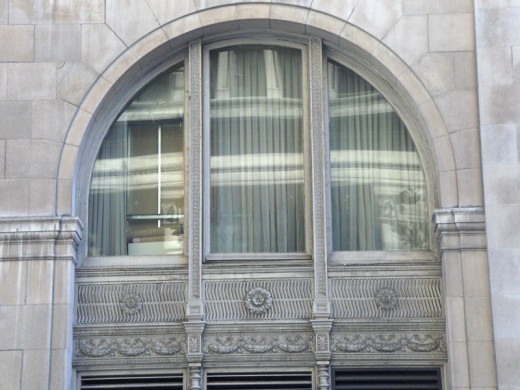
Similar type windows appear midtown, but they’re probably more likely office windows.
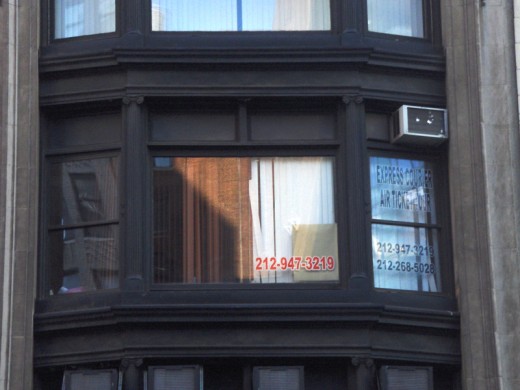
Of course, in the older midtown office buildings there are plenty of attractive windows
that have been well maintained (despite the signage.)

There are also plenty of ugly windows even though the building, itself, was
obviously attractive at one time. Disrepair has set in like an old subway station.

I’d hoped to find that shark tank from the street level, as the New Yorker article
suggested, but it’s not quite that obvous to the pedestrian. I couldn’t find it.
I did find this house in construction (or is it deconstruction?).
Perhaps, the shark got loose and ate his way out of the building?
Daily post &SpornFilms 02 Aug 2008 08:08 am
Time for a Plug
- It’s time to plug a couple of new dvds I have in stores.
If you’d ask me which are the favorites of all the films I did, three of these four being released would be among my choices. Other than The Hunting of the Snark, I’d have to name The Marzipan Pig as a great film. I also love Abel’s Island and The Story of the Dancing Frog. The fourth film, Jazztime Tale was for me a daring experiment. I tried for a musical climax since the film was about Fats Waller. It’s a purposefully soft movie that comes together during a performance by Fats. It’s not my favorite film, but it’s one that sure has become popular and successful.
You can find these dvd’s on Amazon for $12.99.
They’re $9.72 direct from the distributor, First Run Features.
I found this good review here.
Mike Barrier had nice things to say here. I’m proud of his comments: “The Marzipan Pig is the kind of book that would scare the pants off most Hollywood animators, skating as it does along the very edge of preciosity—and Michael uses every word of the book—but the Sporn version is mysterious and touching, and often beautifully animated.”
I also love all 9 reviews that appear on Amazon for the vhs tape of The Marzipan Pig.
From my blog:
Here’s a piece on Bridget Thorne‘s great backgrounds for Abel’s Island.
Here’s a sample of some of the storyboards for The Marzipan Pig that appear on the dvd.
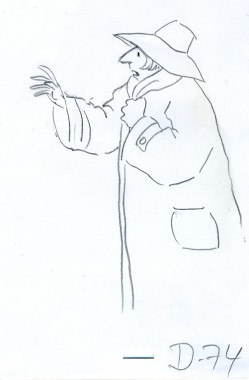
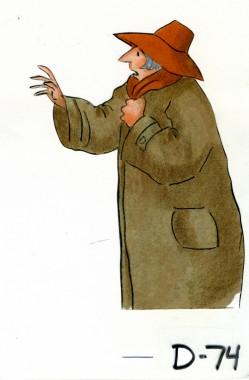
Here’s a character from The Marzipan Pig. Tissa David animated the entire film, herself, and did a caricature of herself with this woman whose purse is stolen by an owl.
Stephan MacQuignon colored the drawing and Robert Marianetti added shading. Christine O’Neill did the cut and paste on the drawing to cel operation.
The followup to this pair of dvd’s will be a boxed set of six dvd’s to be released in October. You can see what all six dvd’s contain here.
The box set packaging appears below.
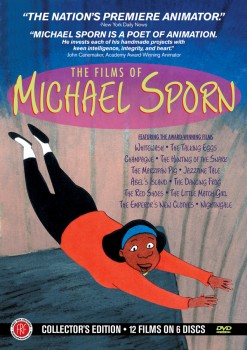
The boxed set will include these titles:
The Hunting of the Snark, The Marzipan Pig, Abel’s Island
Whitewash, Champagne, The Talking Eggs, The Red Shoes,
The Little Match Girl, The Story of the Dancing Frog,
Jazztime Tale, The Emperor’s New Clothes, Nightingale
Animation Artifacts &Commentary &Hubley 01 Aug 2008 08:05 am
Everybody Rides – 2
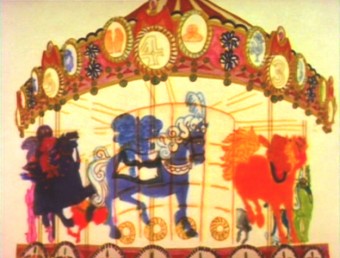 – We started slowly on Everybody Rides the Carousel. There was a six month schedule for about 72 mins of animation. Three half-hour original tv shows for CBS about 24 mins each. They’d air in the late summer of 1975 just prior to the start of the new tv season. Each show would air a day apart from the others – three nights in a row.
– We started slowly on Everybody Rides the Carousel. There was a six month schedule for about 72 mins of animation. Three half-hour original tv shows for CBS about 24 mins each. They’d air in the late summer of 1975 just prior to the start of the new tv season. Each show would air a day apart from the others – three nights in a row.
John and Faith spent a lot of time – a lot of time – at RCA studios on 45th Street. (It’s
____ The carousel was bottom lit & became soft focus.____-_ now an IRS office.) They recorded many of voices playing the numerous parts in their show. I tried to time meeting them there a couple of times hoping to meet some of the actors (I particularly wanted to see Jack Gilford in action. He was doing an hilarious part with his wife, playing a couple of cranky old people in a diner.) It didn’t work out that way, but I did see the facility and heard parts in process.
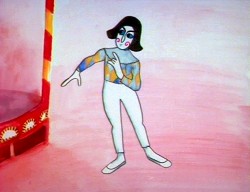 The key staff working IN the studio (not counting animators who would, for the most part, work freelance) included Ida Greenberg. Ida was a brilliant checker/coordinator who’d started back in the Florida days of the Fleischer studio. (She told me a few great stories about Gulliver’s Travels.) Ida was a great woman, with the thickest New Yowk accent, who never seemed to buckle under pressure. I grew very close to her. I tried after that to have Ida everywhere I worked. She led Raggedy Ann’s I&Pt and R.O.Blechman’s special._____________ Art Babbitt animated some of the mimes.
The key staff working IN the studio (not counting animators who would, for the most part, work freelance) included Ida Greenberg. Ida was a brilliant checker/coordinator who’d started back in the Florida days of the Fleischer studio. (She told me a few great stories about Gulliver’s Travels.) Ida was a great woman, with the thickest New Yowk accent, who never seemed to buckle under pressure. I grew very close to her. I tried after that to have Ida everywhere I worked. She led Raggedy Ann’s I&Pt and R.O.Blechman’s special._____________ Art Babbitt animated some of the mimes.
Kate Wodell was a student of the Hubleys at Yale. She was a talented artist who’d moved into production during the making of Cockaboody and continued on staff there. Sometimes she colored, sometimes she animated, sometimes she did whatever was necessary. This was exactly how I moved into the studio and loved the experience. She worked with Faith for many years after John died.
Earl James was an animator who’d worked in the backroom of many NY studios from Paramount to Terrytoons to NY Institute of Technology. He also had done some comic strip work.
Earl was given the carousel to animate. This came from a couple of elaborate drawings John did. Earl worked 16 fld. using a 96 drawing cycle. It gave us a lot of opportunity to move in tight or stay wide. However, it was a nightmare that took forever. Joe Gray was hired to assist Earl. (Joe started during the Terrytoons strike and never left. He was a lifetime assistant like a handful of other noted names in NY.)
This scene moved so slowly through production that I kept jumping in to assist as well. I was a fast assistant, but that carousel slowed even me down. 8 horses moved in perspective in a circle; you got to see 96 different rotating views of all the horses. I’d guess the scene took about 10 weeks to complete.
I was also doing layout and animation of a lot of connecting scenes throughout the production. These were scenes that would have to blend from one animator to another, or John had decided to go in tight for a closeup. In one case with Art Babbitt’s mime character, I was asked to change it from two’s to four’s with a dissolve technique John taught me (he said they’d used it on Fantasia.)
There were four people in my room, Earl, Joe, me and Mark Hubley. He worked alongside me for most of the film. He colored artwork given him by Ida, who was working in the larger room next door. Mark and I had a good releationship going back the many years I worked there. He joined the studio once he completed college. Emily Hubley worked alongside Kate and Ida.
Two younger, more experimental animators were brought in by John. Adam Beckett had made a name for himself with the films he was doing at CalArts.
Fred Burns was doing some incredible work at UCLA. They both were very different and added their unique touch.
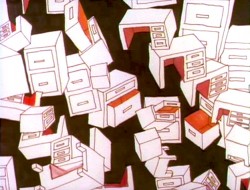
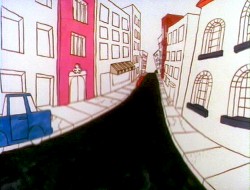
___________ Adam Beckett’s scenes included these two surreal images.
Adam did a scene a couple of scenes wherein office furniture floated about in a very complicated surreal cycle. Fred did this amazing scene of a roller coaster from the POV of the rider. He and I worked together a number of times after that, and we’ve stayed friends.
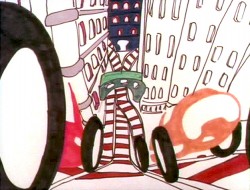
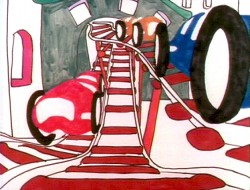
______________ Fred did this very elaborate sexual roller coaster.
I decided, last week, that I had a lot to say about this feature film. Hence, you’ll have to excuse me for reminiscing over the series of pieces I’m going to write. I also have some artwork – other than frame grabs – that I’ll try to share in future pieces.
